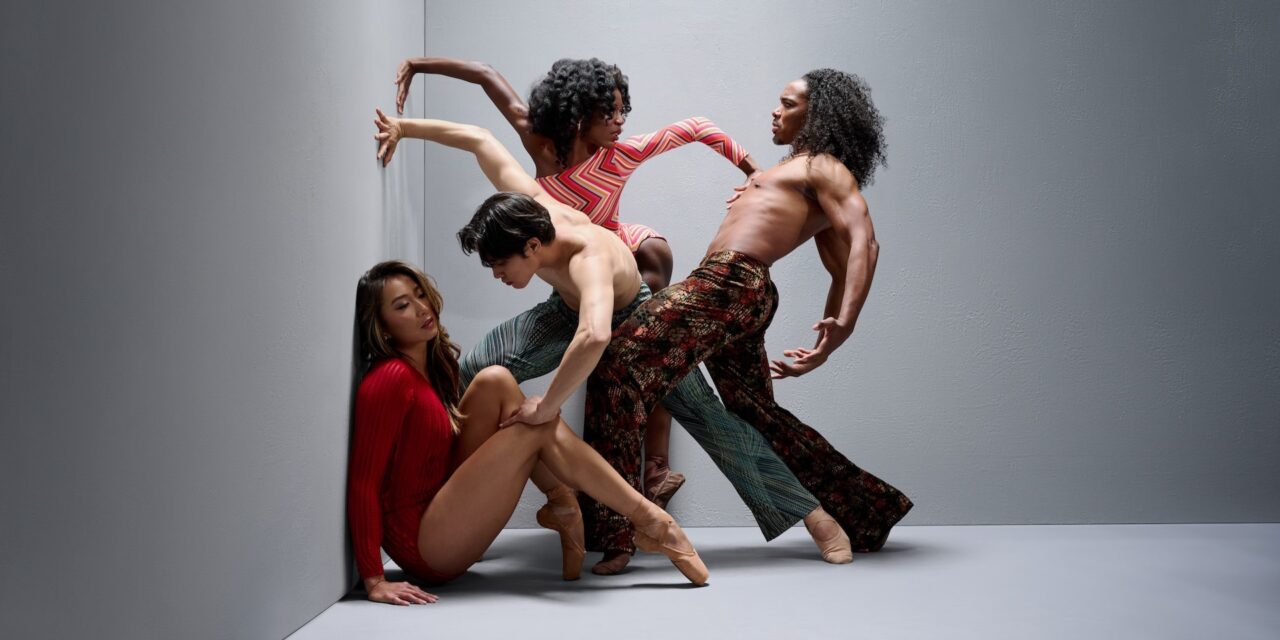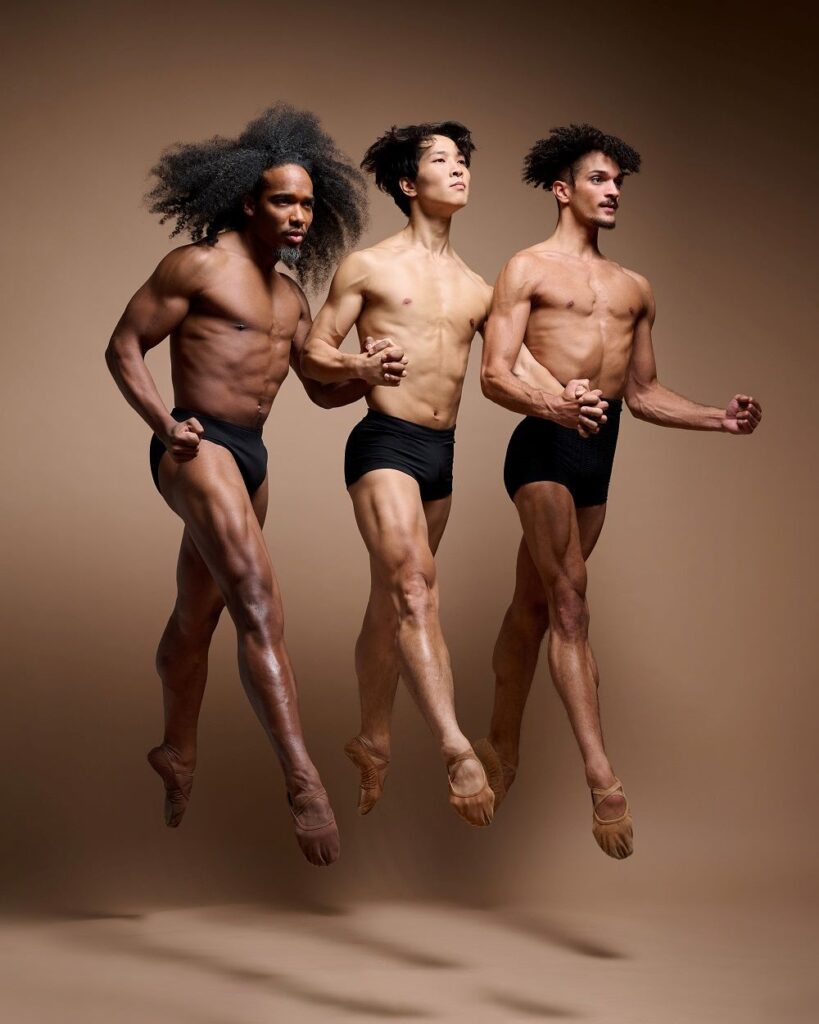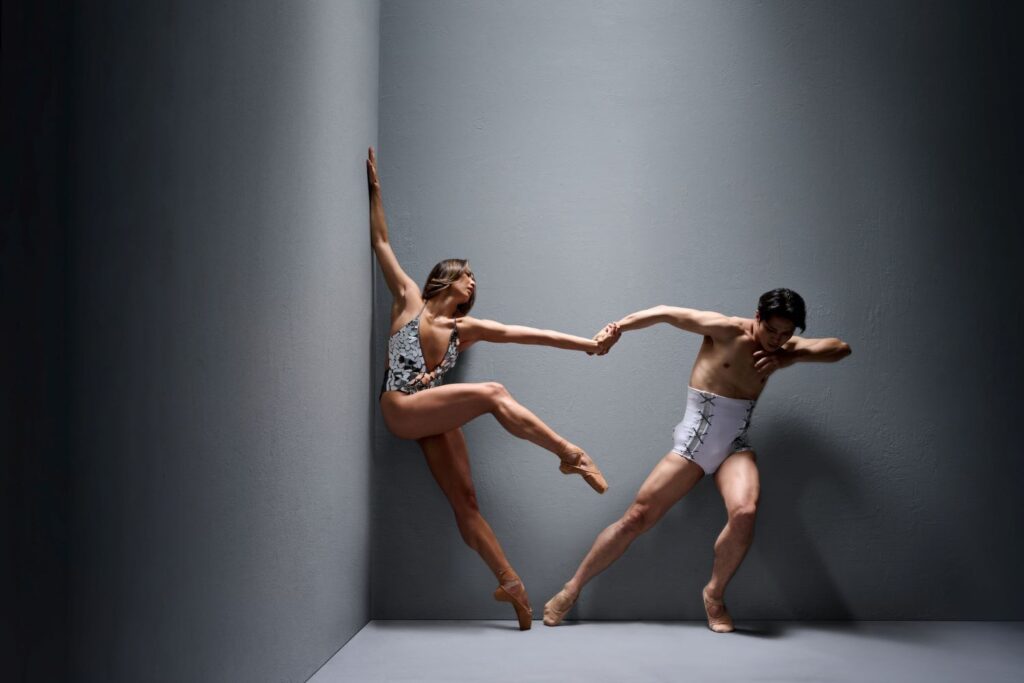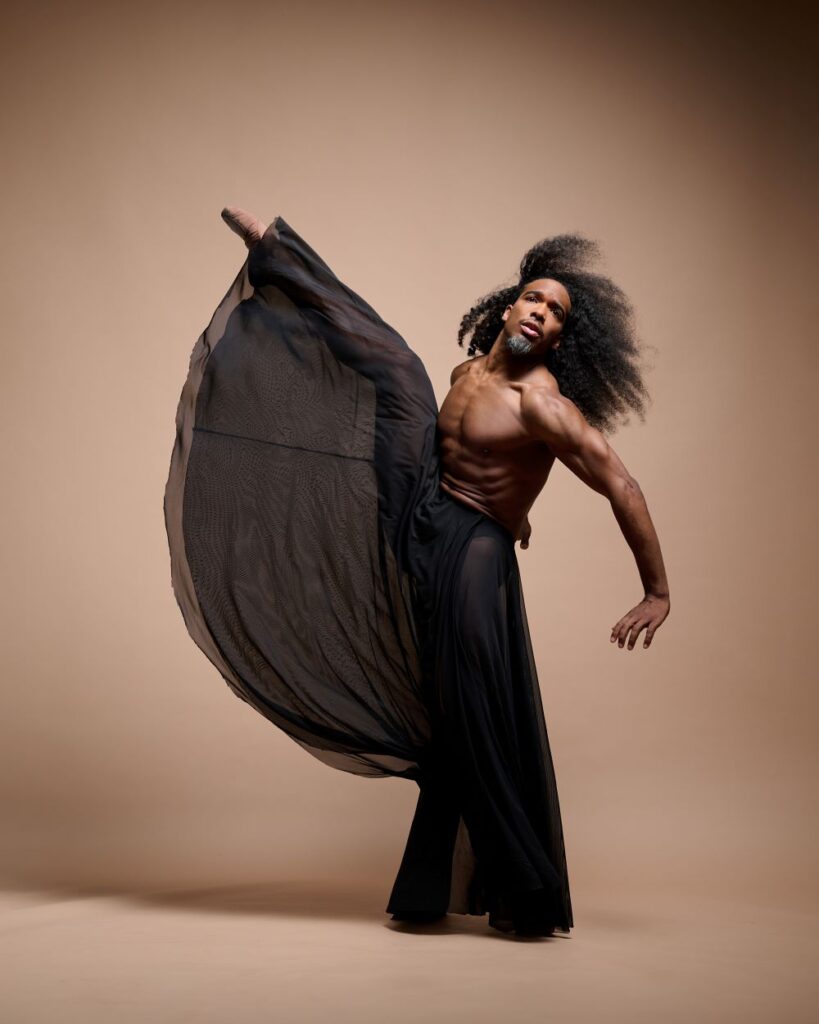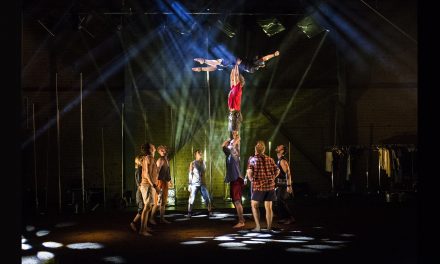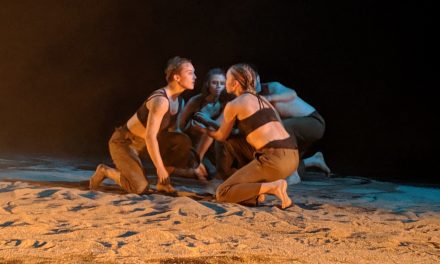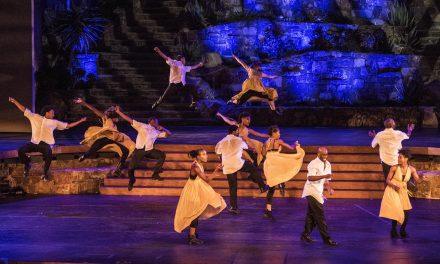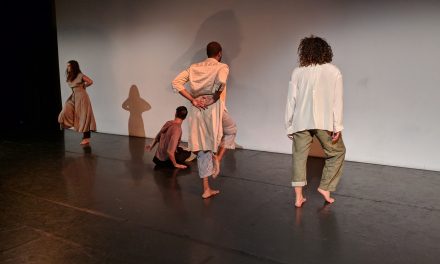It finally felt like Fall in Los Angeles on the night of October 24, 2025, when I arrived at The Music Center’s Dorothy Chandler Pavilion for a spectacular showcase of dance by Complexions Contemporary Ballet. An evening dedicated to celebrating the 30th anniversary of the company, founding co-artistic directors Dwight Rhoden and Desmond Richardson have created a legacy that’s impact is felt through their fusion of choreographic styles, emotive narratives, and excellence in presentation.
The first half of the program was a reflection on the company’s vast artistry and range that has spanned over three decades. Titled Retro Suite, the company presented works that felt significant to their artistic history. Beginning with a work titled “This Time, With Feeling,” created in 2025 and choreographed by Rhoden, the curtain opened to the dancers pre-set on stage, under lighting design by Michael Korsch, their strong, bare backs facing us, and around me the audience was audibly in awe of the picturesque beauty. The company quickly set the expectation of excellence in the ways in which their technical abilities, precise lines, and in sync unison work came alive in this piece. Set to music by David Rozenblatt’s Divertimento, the piece highlighted the choreographers and dancer’s musical ear as they moved in conjunction with each sound.
Following the opening act was a trio titled Deeply also choreographed in 2025 by Rhoden, and set on dancers Jillian Davis, Joe González, and Vincenzo Di Primo. The striking dancers wearing black, amazed me with their ability to partner one another with abandon and delicate cantilevers. What stood out to me about this particular piece was that the casting of dancers’ body proportions were so varied in height, that one wouldn’t presume these dancers would ever be put together to seamlessly lift and catapult one another through space. However, the dancers flowed in and out of one another as if they were born to do so, breaking the stereotypical narrative that women can’t partner men or that height differences can be restrictive in partnering.
Up next was a piece originally set in 2000 titled Gone, performed to music by Odetta and performed by the all male cast of Michael Cherry, Aristotle Luna, and Angelo De Serra. This work demonstrated the brute physical strength that these dancers embodied. The three dancers athletically moved through space with a sensitivity to their power. Rhoden’s choreography is an honest reflection of what I imagine contemporary ballet to be. His choreographic choices of floor work, abandon, and modern narratives to enhance the technical beauty of classical ballet is not an easy feat, yet Rhoden executes the fusion flawlessly.
One of my favorite pieces of the evening is a Complexion’s classic, Ave Maria choreographed in 1995 and performed by the stunning April Watson and Joe Gonzalez. This piece had a poignant, and almost spiritual presence, as the dancers took risks physically and emotionally, it was a piece I wished would never end. I applaud the dancers for their emotive abilities, adding the necessary melodrama without making their expressions look ‘put on’ or inauthentic.
Closing the first act was an excerpt of a piece titled Mercy, originally choreographed in 2009 and performed by the full company. This piece was riveting as the dancers, wearing white flowing pants moved dynamically to the driving rhythm of the music by Hans Zimmer. With their hair taken out of their classical ballet buns, and flying with the intensity of the choreography, the dancers moved as a powerful unit exploring themes of suffering, redemption, and power. An exciting end to the piece was when each dancer brought out a black bucket that they used as a chair or stood atop, creating an interesting architectural design for the dancers on stage. There was a ritualistic nature to this work, powerful in motif and design and one that left me wondering what was to come in the second half of the show.
The final portion of the show, titled For Crying Out Loud was set to music by the legendary rock band U2, showcasing excerpts set to their acoustic album and featuring beloved songs such as “With or Without You,” “Where the Streets Have No Name,” “Pride,” and more. Performed by the whole company, the rock n’ roll suite celebrated the dancers in their physical and emotional capacity, and it felt uplifting to watch as they almost rebelliously found joy as they moved through group work, duets, and dynamic solos.
Complexions demonstrated the boundless possibility that dance and humanity has to offer. Breaking down barriers, fusing together styles, bodies, and ideas, all while maintaining a technical excellence to the craft. In a world that often feels divided by our differences, Complexions Contemporary Ballet set up a clear reminder that there is unity in diversity, in not just the possibilities of dance, but in life.
The incredibly talented company includes Bilgude Ariunbold, Jordan Beasley, Aeron Buchanan, Michael Cherry, Angelo De Serra, Chloe Duryea, Marissa Mattingly, Laura Perich Villasmil, Imani Sailers, Lucy Stewart, Aristotle Luna, Jasmine Robinson, and Manuel Vaccaro.
To learn more about Complexions Contemporary Ballet, please visit their website.
To learn more about The Music Center’s Dorothy Chandler Pavilion, please visit their website.
Written by Rebecca Lee for LA Dance Chronicle.
Featured image: Dancers of Complexions Dance Contemporary Ballet – Photo by Rachel Neville.

